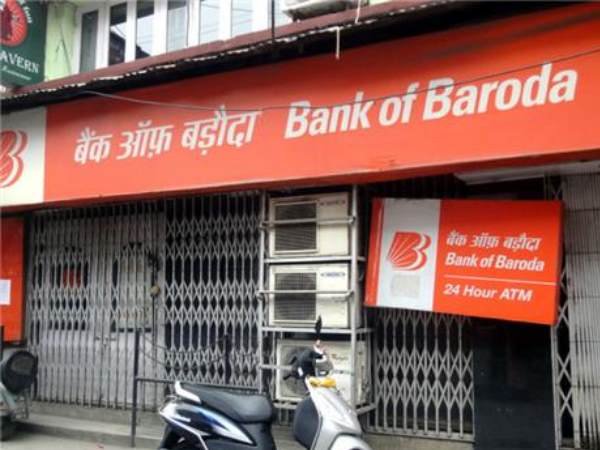What is Mutual Fund SIP?
SIP stands for Systematic Investment Plan and is a form of investing in mutual funds. A lump sum or one-time payment is another choice for investing.
SIP allows you to invest as little as Rs 500 in a mutual fund, which is not possible for most other investment options. There are a variety of mutual funds to choose from, and you can invest in ones that have investment goals and risk levels that match your risk profile. A Systematic Investment Plan does not require a large sum of money to start, as the minimum investment is as low as Rs 500, and some funds also provide SIPs for as little as Rs 100 per month. As a result, one of the most important strategies for prudent investing is systematic investment plans.
Why SIPs are best for beginners?
There is no need to time the market when you use a SIP for your investing needs. There’s also a methodical approach to investing. Furthermore, you will benefit from two effective investment strategies: compounding and rupee cost averaging.Your mutual fund investments are managed by a competent fund manager with the assistance of a research team. The asset allocation investment plan is developed by the fund manager. Investing in fixed deposits can only give you extra income. If you want to build wealth, however, SIP mutual funds are a good option. And at the interval you want to spend, this balance is automatically deducted from your bank account. Individuals can diversify their portfolios by investing in a variety of stocks as well as other assets such as debt, gold, and other precious metals.
Tax Benefits on Mutual Funds
Tax deductions are available for various financial instruments under Section 80C of the Income Tax Act, up to a limit of Rs 1.5 lakh per financial year, and tax-saving mutual funds are one of them. Due to its higher returns and the shortest lock-in period of three years among all Section 80C options, the Equity Linked Savings Scheme (ELSS) has become a common tax-saving choice for Indians in recent years.
5 Best SIP plans to invest in 2021 for Beginners
5 Best SIP plans to invest in 2021
| Fund Name |
NAV |
Minimum SIP |
1 Year Return |
3 Year Returns |
Expense ratio |
| Quant Active Fund |
Rs 361.36 |
Rs 1000 |
118.7% |
26.94% |
0.57% |
| Mirae Asset Tax Saver Fund |
Rs 29 |
Rs 500 |
88.32% |
20.69% |
0.30% |
| PGIM India Midcap Opp |
RS 37.29 |
Rs 1000 |
116.93% |
22.75% |
0.45% |
| Mirae Asset Emerging Bluechip Fund |
Rs 90 |
Rs 1000 |
86.54% |
21.14% |
0.73% |
| Parag Parikh Flexi Cap Fund |
Rs 43.13 |
Rs 1000 |
70.41% |
21.54% |
0.91% |
Quant Active Fund
The 1-year returns on Quant Active Fund Direct-Growth are 118.17 percent. It has produced an average annual return of 20.87 percent since its inception. The healthcare, financial, metals, chemicals, and technology sectors account for the majority of the fund’s holdings. In comparison to other funds in the group, it has less exposure to the healthcare and financial sectors. If an individual invest Rs 10,000 monthly SIP for 3 years, his annulaized return would be 45.62%. This is ELSS fund.
Example: For an investment of Rs 3.6 Lakhs, his returns will be Rs 6.76 Lakh, that is profit of Rs 3.16 lakh(45.62% returns)
Mirae Asset Tax Saver Fund
The 1-year returns on Mirae Asset Tax Saver Fund Direct-Growth are 88.32 percent. It has returned an average of 21.79 percent every year since its inception. Every two years, the fund has doubled the capital invested in it. The Value Research Online has rated 5 Star for the fund. It is a equity linked scheme and minimum lock in period is 3 years. The NAV of the fund is Rs 29 and size of the fund is RS 7251 crore. The expense ratio on the fund is 0.30% The minimum amount of SIP is Rs 500. The one year and 3 years return on the fund is higher than the category average returns. The fund’s top 5 holdings are in HDFC Bank Ltd., ICICI Bank Ltd., Infosys Ltd., Axis Bank Ltd., Tata Consultancy Services Ltd.
PGIM India Midcap Opp
The 1-year direct growth returns of the PGIM India Midcap Opportunities Fund are 116.93 percent. It has produced an average annual return of 19.26% since its inception. The fund’s top 5 holdings are in ICICI Bank Ltd., Aarti Industries Ltd., MindTree Ltd., Federal Bank Ltd., Voltas Ltd.. For May 21, 2021, the NAV of PGIM India Midcap Opportunities Fund is 37.29. The EtMoney Rank of PGIM India Midcap Opportunities Fund is #1 out of 19 funds, with a consistency rating of 5.
As a result, the PGIM India Midcap Opportunities Fund could be a good fit for your portfolio. The Value Research Online has given 5 star rating for fund. This suggests that the fund has not only generated strong returns in the past, but has also done so consistently.
Mirae Asset Emerging Bluechip Fund
Mirae Asset Emerging Bluechip Fund
Emerging Asset Mirae Asset Mirae Asset Mirae Asset Mirae Asset had assets under management (AUM) of 69772 Crores, making it a medium-sized fund in its group. The fund has a 0.64 percent cost ratio, which is lower than most other Large & MidCap funds. The 1-year returns on Mirae Asset Emerging Bluechip Fund Direct-Growth are 86.54 percent. It has returned an average of 24.74 percent per year since its inception. Every two years, the fund has doubled the capital invested in it. The fund has the majority of its money invested in Financial, Healthcare, Technology, Automobile, Energy sectors.
Parag Parikh Flexi Cap Fund
It has returned an average of 20.08 percent every year since its inception. Every two years, the fund has doubled the capital invested in it. The returns on the Parag Parikh Flexi Cap Fund Direct-Growth Fund over the last year have been 70.41 percent.The NAV of Parag Parikh Flexi Cap Fund for May 21, 2021 is 43.13. The fund’s top 5 holdings are in Alphabet Inc Class C, ITC Ltd., Microsoft Corportion (US), Bajaj Holdings & Investment Ltd., Facebook Co.
Conclusion
“Mutual Fund investments are subject to market risks,” we have all read and heard. The schemes must be selected based on your desired risk percentage. If you don’t want to take any risks, you can invest in debt or equity savings funds, all of which have no equity exposure and low risk. You can invest in neutral or balanced advantage funds if you believe you have moderate risk tolerance. You could invest in pure equity funds if you are a high-risk taker with a capacity to invest for at least five years.
Diversification is, in fact, one of the most significant advantages of investing in a mutual fund. It ensures that a drop in the price of one or even a few securities does not have a significant impact on portfolio efficiency.
GoodReturns.in






















